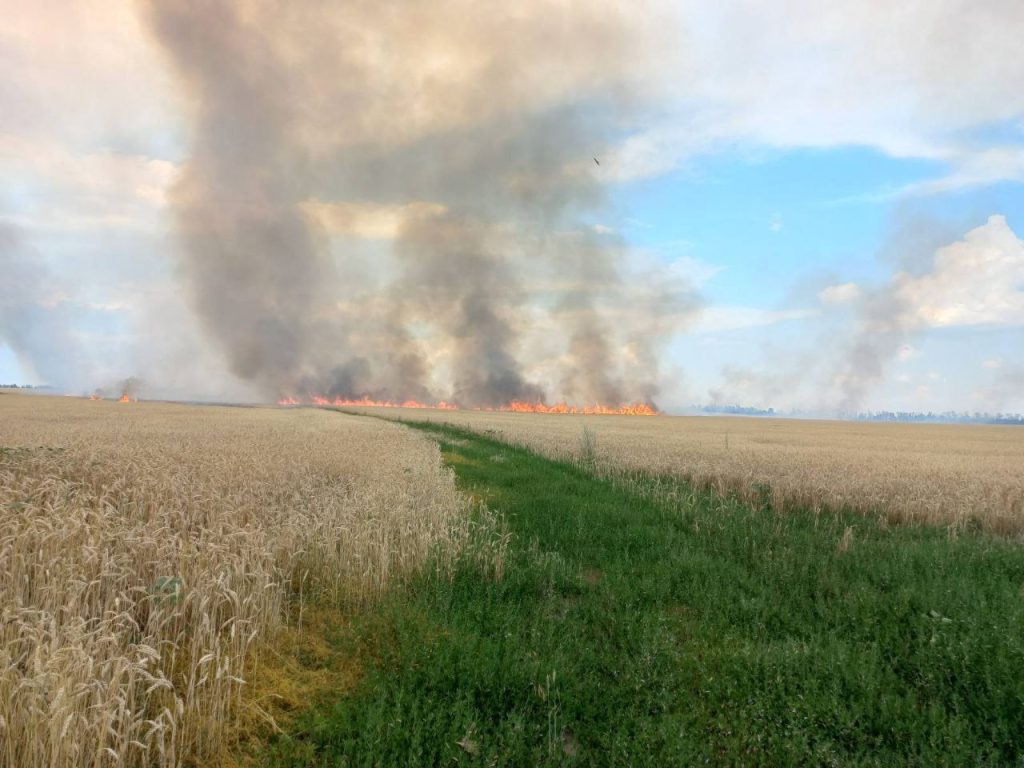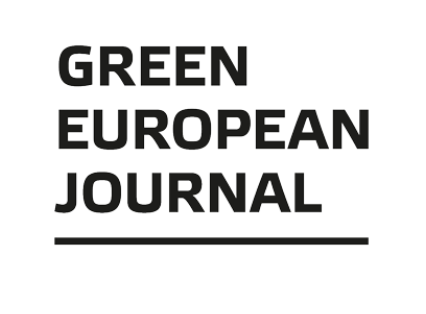Ukraine: Still Europe’s breadbasket
In the 1990s, Ukraine again became one of the world’s leading grain exporters after decades of Soviet agricultural mismanagement. It retains this status despite the major disruptions to the European grain market caused by the war.
Ukraine has always been one of the largest suppliers of grain to global markets. At the beginning of the twentieth century its share in the global export of wheat stood at 20%, barley at 43% and grain in general at 21%. No wonder that it earned the nickname of the ‘breadbasket of Europe’: grain crops have always been the main exports of Ukrainian agriculture.
For a long time, the USSR (like the Russian empire) was a net exporter of grain, mostly from the Ukrainian SSR. Not only was this policy responsible for the Holodomor, the state-engineered famine in 1932 and 1933 that killed millions in Ukraine, but it also caused the post-war famine of 1946–1947 and the early 1950s. Then, in 1961, a landmark event took place: for the first time ever, the USSR began buying grain from abroad, mainly from the US, turning it into a net importer. In the Ukrainian SSR, the poor management of collective farms had led to a decrease in yield. Out of 504 collective farms in the Kyiv region, only 25 paid people a salary in cash rather than in natural products.
Between 1963 (when statistics began) and 1990, grain imports grew 10 times – from 3 million to 32 million tons, still primarily from the US. The shortage of supply meant that there was a propagandistic cult around bread in the late USSR. Those who lived through this period as a child recall the only correct answer to the question:
What’s the price of bread?
Bread is priceless.
Children learnt this maxim in schools, and it was impossible to complete the initialisation procedure to join the Pioneers without answering this question.
In 1990 Ukraine officially harvested 51 million tons of grain, a figure that grew to 92.6 million tons by 2020, and a record 106 million tons in 2021, the year preceding the war. Ukrainian exports in 2021 were 51.2 million tons. Throughout the 2010s, Ukraine was one of the world’s top five exporters of grain, alongside the EU, Australia, Argentina and Russia. Ukrainian was deeply integrated into the global grain market with a share of over 10%, capable of both influencing market prices and being susceptible in turn to price fluctuations.

Wheat field in Kharkiv Oblast after Russian shelling on 5 July 2022. Source: Main Directorate of the State Emergency Service of Ukraine in Kharkiv Oblast / Wikimedia Commons.
Ukraine maintained this position as it entered the 2020s: its pre-war share in global wheat exports was 10% (fifth highest worldwide), in sunflower seed exports 42% (highest), corn 16% (second highest), and in barley 10% (third highest).
How has the war affected the grain market?
Until the full-scale invasion, the Ukrainian agrarian export was oriented towards Asian countries and above all China, with shipments to the latter reaching 30% of total agricultural exports (6.3 million tons) – a colossal figure, given the huge monetary and commodity volumes of Ukrainian agricultural trade. Some analysts interpreted Chinese purchasing activity in the 2021 season as Beijing taking steps to shield itself from the effects of a war in Europe, which would inevitably cause an increase in food prices. Sure enough, on 24 February 2022, China was sitting on record reserves of agricultural produce.
On the first day of Russia’s full-scale invasion of Ukraine, rising oil prices and risks of reduced corn supplies from Ukraine and Russia, the world’s biggest exporters of grain, led to an increase in stock prices for grain of up to almost 6%, although prices for Black Sea grain increased substantially less, by between 1% and 2%. Russian bombardments and attacks on Ukrainian port infrastructure also had a clear impact on grain prices on the world exchange. Some of the largest price surges on the NYMEX (New York Mercantile Exchange) in the last five months directly coincided with particularly destructive Russian attacks.
During the night of 6 June 2023, for example, Russian troops blew up the dam of the Kakhovka hydroelectric station on the Dnieper River in the Kherson region. After that, grain prices rose by almost 100 cents in less than two weeks (from 627 cents per bushel – a unit of measurement equal to 27.2155 kg). According to satellite images, over 7,000 hectares of land on the left bank of the Dnieper were flooded after the catastrophe (though the Ukrainian Ministry of Agriculture cites 25,000 hectares). On the right bank, 100,000 tons of crops were destroyed. In the neighbouring Mykolaiv region, more than 1,000 agricultural holdings were covered by water, with commercial losses totalling over $500,000.
On 17 July, prices again leapt upwards when Russia declared that it was abandoning the grain deal – the agreement under which Russia was obliged to provide a grain corridor for cargo ships. That night, occupying Russian troops attacked the Odesa region with missiles and drones, damaging port infrastructure. Prices rose from 654 cents per bushel to 725 cents in just two days. Russia again struck the ports of Odesa and Mykolaiv by night, damaging grain silos. Between 17 and 19 July, 60,000 tons of grain were destroyed by Russian attacks.
EU steps up imports of Ukrainian grain
In the wake of the full-scale Russian invasion, Ukraine began exporting large volumes of goods, including grain, overland. In 2022, for the first time in more than 10 years, Asia lost its position as the biggest importer of Ukrainian agricultural produce. While Ukraine was the top exporter to countries in the region in 2022, with a turnover of $7.3 billion, it has now slipped to third place, behind Europe and Turkey.
In 2022, the volume of supplies of Ukrainian agricultural products to EU member countries increased by 66% year-on-year. The share of domestic exports of agricultural products to the EU exceeded half of all Ukrainian agricultural exports for the first time, amounting to 55.5%. For comparison, 27.7% of agricultural exports from Ukraine went to the EU in 2021.
As a result, five countries bordering Ukraine – Bulgaria, Hungary, Poland, Romania and Slovakia – ended up with a grain surplus and, consequently, a collapse in prices for their own goods. Polish agricultural media reported that from January to August 2022, grain exports from Ukraine to Poland increased by 180% compared to the same period in 2021. In the first half of 2022, the average price of consumer wheat in Poland ranged from 1,600 to 1,800 zloty (€353–€397) per ton; in March 2023 it dropped to 1,000, and in May it fell to 900. Meanwhile, cheap Ukrainian grain continued to flow into the country. Polish farmers were unenthusiastic about the expected losses and protests broke out.
As a result, on 16 April the European Commission permitted the five countries to temporarily ban the import of grain and other types of agricultural produce from Ukraine. The ban was originally imposed until the beginning of June, and later extended until 15 September. After this period the European Commission announced the end of trade restrictions on Ukrainian grain products, indicating that the measures taken had eliminated the influence of Ukrainian grain on the markets of the five nations that and it was possible to export to countries outside the EU.
Poland and Hungary called for the decision to be reversed, but the European Commission rejected their requests. In response, the two countries, joined by Slovakia, announced their intention to impose the restrictions even in the absence of agreement from Brussels. Consequently, in addition to wine and beef, the import of corn, sunflower seeds and barley remained prohibited in these countries. Poland, however, maintained ‘grain corridors’ for other European countries that need Ukrainian grain. Moldova has a similar problem to the three countries above: its farmers are asking the government to take action and reduce the amount of sunflower seed that they plan to import from Ukraine this year.
Poland, Hungary and Slovakia justify their rebellion by referring to the need to protect local farmers from excessive competition created by the increase in Ukrainian imports. But is there another rationale behind this move?
New leaders in Ukrainian grain imports
Data from the Ukrainian Ministry of Agriculture from 1 July 2022 to 30 June 2023 provides information on the grain market throughout the entire war, although they indirectly include the pre-war autumn sowing season in 2021. Despite missiles, naval blockades, land mines, occupation and long hold ups at the borders, exports for this period were higher than in 2021/2022. This does not mean that Ukrainians earned more: sales prices for farmers have fallen significantly compared to the pre-war period.
In the 2022/2023 marketing year (from 1 July 2022 to 30 June 2023), Ukraine exported 48.99 million tons of grain and pulses. For the previous period, the total figure was 48.355 million tons. The leader in Ukrainian grain imports, as noted earlier, is now Europe and Turkey. For wheat, the share of exports to Turkey increased from 10% to 20%, for barley from 19% to 23%, for oats from 0 to 4%, for oil from 3.5% to 19%.
Romania, meanwhile, increased its share in Ukrainian wheat exports from 0.5% to 15.8% over the season. Operators at the Romanian port of Constanta are investing in their grain handling capacity: Constanta now has a logistics capacity of 40 million tons of grain per year, a significant increase on its previous annual record of 25 million tons, set in 2021. Poland also needs to increase the capacity of its ports. Despite the ban on the import of Ukrainian grain, enormous volumes continued to pass through the country in transit. In June this year exports from Poland’s Baltic ports grew to 260,000 tons. As a result, in August the country called on the EU for help increasing the throughput capacity of its ports.
Spain also increased its import of Ukrainian wheat from 0.8% to 14% of its total wheat imports. The share of Ukrainian barley exports to Spain amounted to 18.7%, while corn exports made up 10.5%. The top five importers of Ukrainian grain for various crops also included China (barley and corn imports), Hungary and Italy (6.7% and 6.9% of corn imports respectively).
Poland is among the top five largest importers, but only in terms of wheat; the share of Ukrainian exports to Poland was 5.5%. Poland ranks eighth in barley and seventh in corn, and was the primary importer of rapeseed, rye and oil-cake from Ukraine. These were significant changes. Yet, some argue that in fact Ukrainian grain does not have much influence on the Polish market at present. Economists Oleg Nivievskyi and Pavlo Martyshev have collected information on prices from various sources:
‘Two rather interesting conclusions can be drawn simply from the price chart: first, Polish farmers now have almost twice as much revenue. Why? The reasons are known to everyone. We are at war, logistics are very expensive, there are risks, limited export opportunities, etc.’, Nivievskyi wrote on Telegram. It is important to note that he published this conclusion at the end of September, after several months of the embargo on Ukrainian grain.
As for the import of Ukrainian grain to Hungary and Slovakia, it is impossible to say for sure whether the share of imports has really changed enough to truly justify the ban. One can assume that Hungary’s refusal to import Ukrainian grain is another decision in favour of anti-Ukrainian interests. But Slovakia’s decision may be justified as an attempt to protect local farmers. The fact is that agricultural lands in Slovakia account for 2.44 million hectares (almost half of the country’s total area), of which 34% are hayfields and pastures. Ukraine, meanwhile, has 42.7 million hectares (over 70% of the country) of agricultural land – 17.5 times more than the total of Slovak agricultural areas.
What else can stabilize the market?
One solution for the stabilization of the grain market has been proposed by Lithuania, which suggested intervention by the European Union to purchase grain for storage. This idea was voiced by the head of the Lithuanian Grain Industry Association, Aušrys Macijauskas. According to Macijauskas, the solution is not new: the proposed scheme was tested in the EU and operated successfully about 20 years ago. When grain prices fell below the established minimum limit, the mechanism was activated, and millions of tons of grain were purchased and placed in storehouses. Then, when prices rose, they were successfully sold.
According to Macijauskas, this measure will allow the Eastern European market to ‘avoid unnecessary threats’. If an average of 100 euros is paid for one ton of Ukrainian grain, he argued, it could be bought for 150 euros, and after the end of the military conflict, sold to North Africa for 250 per ton. Macijauskas added that about 1.5 billion euros were needed to implement this plan, noting that on an EU scale this is a relatively minor sum.
The president of the Ukrainian Grain Association (UGA), Nikolai Gorbachov, has also proposed a solution to the conflict. According to Gorbachov, three steps would improve the economics of Ukrainian grain exports, which he has already put forward to the European Commission. The first is the development of the ‘Danube Route’. Negotiations between Ukraine and the European Commission and the United States on the development of the Danube Route have been ongoing since the beginning of summer 2022 and have already resulted in a decision to increase the number of barge pilots on the Romanian part of the Danube. Also under discussion is the possibility of opening the Sulina Canal 24 hours a day, which would increase the number of ships and barges able to pass through the canal. Anchorages will also be allocated in Romanian territorial waters (for now only in the port of Constanta) for the transfer of grain from barges to large-capacity vessels. This way, it will be possible to increase export volumes via this route to 30–35 million tons of grain annually.
The second step is compensating European carriers for the cost of delivering Ukrainian grain from the border to European ports, so that grain exports across the western border do not punish agricultural producers in Ukraine due to expensive logistics. The UGA proposed this measure to the European Commission with support from the European grain association COCERAL. In this case, the costs involved in exporting Ukrainian grain to European ports would be comparable to the cost of delivery to the ports of Odesa and give Ukrainian producers a fair price for their products.
The third step is the transfer of sanitary and phytosanitary control from checkpoints on the border with Ukraine to the port from which the grain will be exported. Ukraine’s Polish partners supported this initiative, with the Polish agriculture minister proposing that Vilnius transfer phytosanitary control from the Polish border to Lithuanian ports.
Requirements for the quality of grain
In 2022 Ukraine’s Ministry of Agrarian Policy decided to undertake work on adapting its methods and standards for determining the quality and classification of grain, in an attempt to bring them closer to so-called ‘European standards’. However, it turned out to be very difficult to compare the parameters by which the quality of wheat is assessed in Ukraine and the countries of the EU. In addition, no single system of EU grain standards exists, and not even all EU members have their own quality standards for grain.
The specifics of grain quality assessment in the EU can be judged by the requirements for grain purchased by the EU Commission for intervention stocks (the so-called ‘standard quality’ grain), as well as the requirements imposed by the EU. For example, unlike post-Soviet Ukrainian national standards, the protein or gluten content in wheat is not a decisive factor in determining quality. The methodology for determining quality is based mainly on test weight, purity and external consumer characteristics: colour, smell, appearance, type and moisture.
It is also important to note that in individual markets, buyers in each case present their own requirements for grain purchases. It is therefore unlikely that it will be possible to bring Ukrainian standards in line with European ones, and it is better to leave everything as it is, in order that the market has the opportunity to regulate itself.
For this reason, Ukrainian farmers are not waiting for changes in national standards but are already trying to create products that correspond to the EU market. Requirements for pollutant residues, diseases, pests and toxic seeds represent the biggest challenges for exporters. Lack of experience and insufficient knowledge of EU legislation are factors that could result in products being returned.
On the other hand, the quantity of grain exported in 2022 and 2023 – a little over 58 million tons of grain, shows that many farmers all the same are supplying grain of relatively high quality for the EU. According to director of the Department of Foreign Economic Activity of the Agrotrade Group Andriy But, almost none of Ukraine’s agrarian exporters uses chemicals banned in the EU, and Ukrainian grain today is regularly delivered to the European market.
The biggest problem exporters are facing, according to Vadim Turyanchik, an expert on feed and food safety from the UGA, is processing grain from the 2022 harvest, especially corn during long-term storage in silos. High temperatures and the impossibility of treating silos and storehouses between seasons are favourable conditions for the spread of pests. The blackouts caused by the constant attacks on Ukraine’s energy network were also a factor that played a role for many farmers, who were unable to dry their grain due to the lack of electricity. In fact, Ukraine has sufficient supplies of chemicals capable of solving this problem, permitted for use in the EU. It is simply that not all farmers are yet aware of these.
Prospects
It is hard to make any kind of forecasts in a country at war. Sudden events can have a powerful impact on the market. According to Sergei Feofilov, the founder of an analytical agency specialising in agriculture in Ukraine and other countries in the Black Sea region, export volumes in the 2023/24 season will depend on how quickly logistical issues are resolved.
Experts say that if a consensus cannot be reached, there may be a reduction in crop acreage in Ukraine, and some farmers may completely abandon growing grain and oil cultures. Such statements are supported by a recent survey of grain producers by the Ministry of Agriculture. Fourteen percent of Ukrainian farmers planned not to sow winter crops in 2023 (although up to 20% of agricultural producers in Ukraine do not sow winter crops every year).
At the same time, it is reassuring that, according to a firm statement by UGA president Nikolai Gorbachov, the issue with Poland will be resolved: ‘The Ukrainian and Polish sides are actively working on technical questions for resolving the regulation of Ukrainian grain exports to Poland, in particular concerning the licensing of Ukrainian export by agreement with the importing country. According to Gorbachov, the parties’ working groups are actively working, including on the transit of Ukrainian grain via Poland’, he said.
At a time when politicians are trying to find a way out of the ongoing conflict, and Europe’s exporters and importers to find solutions that satisfy everyone, Ukrainians and Europeans find themselves connected through the most precious thing they have: bread.
Published 20 December 2023
Original in Russian
Translated by
Alastair Gill
First published by Eurozine
© Viktoria Hubareva
PDF/PRINTIn collaboration with
In focal points
Newsletter
Subscribe to know what’s worth thinking about.
Related Articles

Despite the uncertainty of recovery from ongoing war, Ukrainians are confronting Russian destruction and de-construction with daily acts of reconstruction. Marginalized landscapes, histories and stories are being rediscovered through a grassroots resistance founded on loss, where language and naming reclaim cultural foundations.

The sharp drop in support for Ukraine in Italy has less to do with the traditionally Russia-friendly economic policy of the Italian right, and more with the anti-Americanism rooted in the political culture of the Italian left, which now articulates itself as pacifism.






